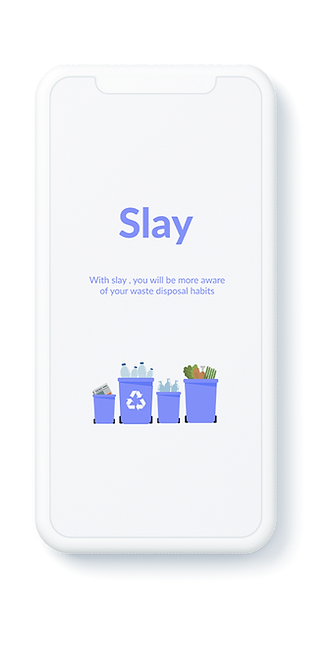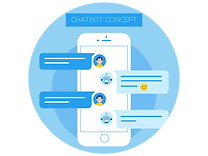A modest attempt to solve
a national challenge
Slay - An app to help people living in developing
countries manage their waste efficiently
by Teja Srinivas, Maninder Singh, Dora Lee
My Role
The Timeline
Ex Mapping
Market research
Ideation
User Flows
Wireframes
Maninder - Research, personas, context
Research - 2 weeks
Design - 4 weeks
Prototyping & testing - 2 weeks
Dora Lee -UI,prototype, usability testing

A Bird's eye View

Problem
Increasing levels of waste in developing countries
Developing countries continue grappling with increasing levels of waste, there was an organisation that saw the need for change. They approached a group of talented individuals, including myself, with a unique challenge: to develop an app that could inform and motivate people in developing countries to reduce, recycle, and reuse their waste.
The problem was evident. Waste in these countries was often not separated, and people lacked the knowledge and motivation to adopt sustainable practices. This led to environmental degradation and a growing crisis. We knew that addressing this issue required a comprehensive solution that would empower individuals and connect them with organisations working towards waste reduction.
Discovery
To embark on this journey, we began by understanding the pain points of the users. Through quantitative research, we conducted surveys and received 65 responses. Additionally, we conducted qualitative research by interviewing eight individuals over Zoom, delving into their psychology and mindsets surrounding waste disposal.
User Context
Mapping the ecosystem that impacts
the a person actions with respect to waste disposal.

User Problems
Quantitative Research - 65 survey responses
Online surveys via Social Networking sites -
To get a good understanding of the problem
space while finding out more about what
effects the user the most.
Qualitative Research - 8 interviewees
Personal interviews over zoom -
To conduct a thorough investigation into
the psychology and mindsets of people.
.png)
Waste management is tough on an individual level as there is no time.

The number of recyling
plants is scarce and
they are often far out of
the city

50% people forget to
segregate their wastes
before disposal
.png)
62% people don’t know where to start. Info on the internet is not helping due to lack of
personalisation
Market Research
Armed with this valuable information, we proceeded with market research. We studied existing products and conducted a comparative market analysis to identify areas of opportunity. With all the data in hand, we synthesized the research and transformed it into personas, making it easily understandable and relatable.

Define
Synthesizing research
Making data into an easily understandable
format by converting it into personas.



The Challenge
Now, the challenge was clear before us: How might we effectively assist people in their personal journey towards a zero waste life? To gain a holistic view of the problem, we created an experience map, outlining the entire waste disposal process and pinpointing key pain points and areas of focus.
Experience map
I have analysed everything that a person goes through while disposing off waste is mapped in order to get a bird’s eye view of the problem, determine key
focus areas and identify pain points.

Develop
Ideation
Using the design thinking methodology, We started to brainstorm ideas together. We knew we could use a few new and exciting technologies like the following.

Augmented Reality

Social Media

Chatbot Technologies
Battling bias
Using the design thinking methodology, we entered the ideation phase, brainstorming and exploring various ideas. We were excited about incorporating innovative technologies such as augmented reality (AR) and artificial intelligence (AI). However, we were mindful of battling bias and ensuring a rationale behind our choices. We carefully mapped the impact of each idea on the overall user experience against the effort required to implement it, allowing us to select the best ideas.

User Flows
Next, we translated these ideas into user flows for the app. We incorporated features that addressed the pain points identified earlier. The flow of the app was designed to guide users from learning about waste to disposal and further steps for waste reduction. Through illustrations, we visualized how our personas would navigate through the app.




Wireframe

Delivery
Solution
And thus, "Slay" was born—an app designed to help people gradually reduce their waste generation. Initially, it aimed to assist with waste segregation and tracking disposal levels but evolved into building communities and aggregating relevant data in one place. Slay utilized AR and AI to provide instant information about the type of waste and how to manage it. Users could set goals, track their waste generation, and earn rewards. The app also facilitated content consumption, interaction, and connection with charities in the area.

Key Features

Instant Information
Slay uses augmented reality and AI to
identify and give information regarding
the type of waste and what to do with it.

Tracking Waste
The slay system encourages users to set goals and track their waste generation with rewards.

Gather Opinions
Consume and interact with content posted by people at different points
in their journey towards a zero waste
life.

Match with a Charity
Get to know the charities in your area and the various ways you can engage with them.
The Prototype

Tasks given to the users
> Look up more info about water bottle
> Set up a pickup with Prayas to give
away clothes on the 9th of July.
> Set up new waste goals
Usability testing
To ensure usability, we conducted testing. However, we encountered some unexpected user behaviors. People wanted more information about plastic waste, even though it was common knowledge that less is better. We listened to the feedback and made changes accordingly, iterating and testing with users once again. It was crucial to reduce cognitive overload and let the system remember progress, rewards, and saved items, while also providing timely reminders.
Further steps to take
> Make changes based on the feedback.
> Use prototyping tools and test with
the users again.

Tough Feedback
Despite our efforts, we received tough feedback. Users mentioned that the AR feature was challenging to build and required extensive data. They found the bin tracking function and AR too demanding. This feedback made us reflect on our approach.


What stays, what goes

Scrap Feature

Scrap Feature

Keep Feature

Keep Feature
Is a mobile app always
the answer?
We contemplated whether a mobile app was always the answer. While it offered accessibility and cost-effectiveness, we acknowledged that users needed sufficient motivation to download and use it. We considered alternative solutions, such as a website with articles and tips, a list of charities, or a clear guidebook.
Alt Solutions
1. A website that offers information through articles and people sharing tips.
2. A list of charities with the space they work in with contact details.
3. A short clear guide book giving a step by step process.
2. An simple app with daily affirmations.

Takeaways
Make it easy, fun and rewarding
Nevertheless, our takeaways from this project were invaluable. We learned that users respond well to apps that are easy to navigate and have a fun onboarding experience. Social aspects, such as sharing progress with others, can motivate people to do more. Rewards proved effective in engaging users with the app.
Users are unpredictable
In the end, users are unpredictable, and their behaviours may not align with our initial designs. Iteration and testing played a vital role in finding the sweet spot. As we reflected on our journey, we recognized areas for improvement.
Reduce cognitive overload
Let the system shoulder the responsibilities of remembering
ereverything from the progress, rewards, saved items and also reminding the users when needed.
Reflection
If i had a second chance
As we reflected on our journey, we recognized areas for improvement. If we had a second chance, we would gather more insights from charities and conduct card sorting exercises to better understand users' relationships with content. A/B testing could provide valuable data, and we would explore the possibility of integrating the app into other social media platforms.
Next steps
Looking ahead, our next steps involved creating a business model canvas, offering free and premium services to app users, and developing relevant content to support waste reduction efforts. We planned to involve potential users in redesigning the app, exploring and defining the service proposition.
Our mission was far from over, but armed with the lessons learned and the determination to make a difference, we embarked on the next phase of our journey, confident in our ability to empower individuals and communities to embrace a zero waste lifestyle.



